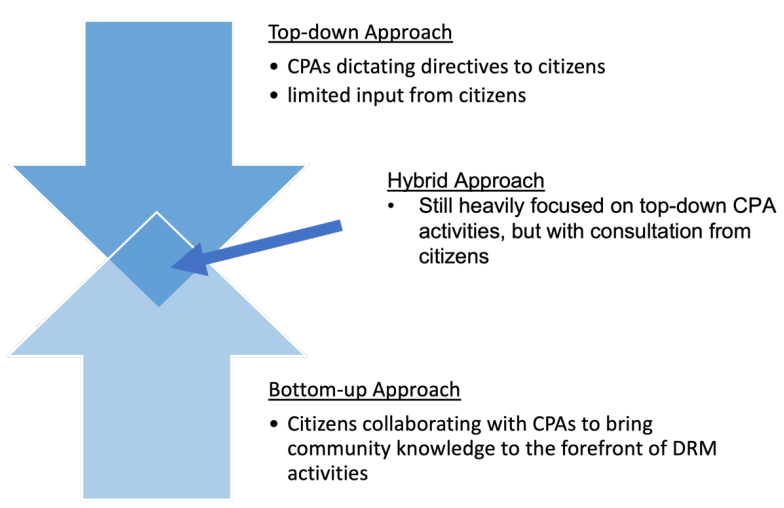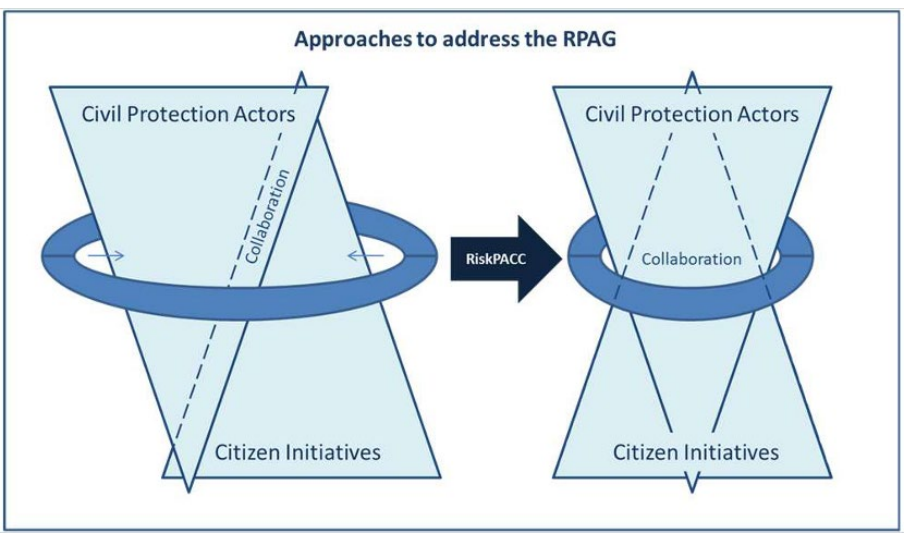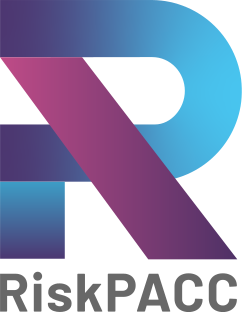“Understanding good practices and challenges in Civil Protection policy and practice” – Work Package 1 Leader interview
RiskPACC Work Package 1 “Understanding good practices and challenges in Civil Protection policy and practice” completed its journey in April 2022. Led by the project partner Trilateral Research, its work and research were focused on:
i) Review the current state-of-the-art (SOTA) of disaster resilience and risk perception concepts and methodologies in research, practice and policy, and investigate how these have evolved;
ii) Establish an appropriate working definition of disaster resilience and risk perception and determine how, as concepts, they have been tailored and operationalised in practice through existing resilience, risk management and crisis guidelines, standards, requirements and approaches;
iii) Analyse the identified approaches and good practices through surveys and local dialogue focus groups with Civil Protection Authorities (and build a community of users for the rest of the project);
iv) Combine an extensive literature review with interdisciplinary knowledge and CPA practices embedded within, emergency responders, responsible bodies and other key stakeholders represented in the project;
v) Clearly define gaps between current practice and SOTA and develop a roadmap of key actions to advance SOTA and provide recommendations for the RiskPACC framework.
RiskPACC recently interviewed the leader of Work Package 1, Selby Knudsen, research analyst at Trilateral Research, who shared the achieved results and outputs.
Can you give some background to Trilateral Research and your individual research interest?
Trilateral Research is a UK and IE-based enterprise, founded in 2004. We provide ethical AI software solutions for tackling complex social problems in the public sector. Our rigorous research is the foundation of our work. Our team members are at the forefront of all things ‘data’ in our complex world: from collection, processing, analysis and modelling to the consideration of emerging policy and regulations in AI innovation. This enables us to:
- Advance our software products by providing ethical AI that is driven by responsible innovation and deep knowledge of relevant social problems
- Ensure our consulting services are at the cutting edge of emerging regulatory and ethical requirements and leverage the latest domain-specific insights
- Continue to innovate, by driving the development of new technologies and methods for ethical AI
Our solutions make it possible for public-sector professionals to make the best use of their data. We focus our efforts on areas where the application of our software and services can make a difference in supporting decision making to enhance societal wellbeing.

My interests lie in disaster preparedness and risk communication, on the interaction between citizens and CPAs, and the empowerment of citizens to become more involved in disaster preparedness.
As WP1 leader, can you describe in more detail Trilateral’s role in the RiskPACC project?
Trilateral led the work in the WP1, specifically the desk-based research on disaster resilience and risk perception and the analysis of the gaps in current CPA practices. Along with University of Warwick (UoW), we established the baseline of the project through both desk-based and empirical research on the central topics being studied- resilience and risk perception- including what is currently being done to address the RPAG. As the WP has been completed, TRI is now focused on communicating the findings of WP1 to the rest of the tasks and integrating some of the knowledge gained into activities such as training, the best practices repository, and the framework. Additionally, TRI manages the ethics work of the project alongside project coordinator Fraunhofer (FhG).

What do you find most interesting or challenging about Trilateral’s role in the RiskPACC project?
Both most interesting and challenging was the empirical research done with CPAs and citizen groups in T1.2 and T2.2. It was interesting to hear perspectives of CPAs to get a better understanding of the current practices on the ground, what they believe is working and what is not, and things they would like to change. Trilateral also analysed the interviews that were done with citizen groups. This provided interesting insight into how citizen groups are currently interacting with CPAs, what disaster management/preparedness activities they partake in, and what issues they have. These interactions provided excellent insights into the current activities and some of the issues and gaps that RiskPACC is trying to address. In terms of challenges, the timing of deliverables and holidays meant that there was not sufficient time to conduct as many interviews as we wanted, and there was a lack of control over who was interviewed, as that was left to the case studies. Therefore, it was a bit of a challenge to obtain all of the information that was needed.
Can you share the results/findings of your WP?
WP1 provides the foundational understanding of the project from the CPA perspective. This includes an understanding of the current state of disaster resilience and risk perception research, the development of definitions for the project and factors that influence resilience and risk perception. Additionally, examples of current operationalisation of the term disaster resilience and risk perception are presented. Empirical and desk-based research was also conducted with CPAs to understand current practices and good practices in different countries. This includes risk communication, risk assessment, and disaster response practices in relation to different hazards of focus. Gaps in current practices are examined in D1.3, highlighting the current issues in risk communication and interaction with citizens.

The specific results of work done in each task can be found below.
Task 1.1:
- Definition of disaster resilience: The ability of an individual, community, region, or country to resist, adapt to, and recover from the impact of a hazard, either natural or anthropogenic. Enhanced resilience can be embedded in activities in all stages of the disaster cycle, and includes positive transformation that strengthens the ability of current and future generations to adapt to future crises, and to survive and thrive as conditions change
- Definition of risk perception: Risk perception involves people’s beliefs, attitudes, judgements and feelings, as well as the wider social or cultural values that people adopt towards hazards and their benefits. The way in which people perceive risk is vital in the process of assessing and managing risk. Risk perception will be a major determinant in whether a risk is deemed to be “acceptable” and whether the risk management measures imposed are seen to resolve the problem.
- Factors: there are many factors that were found the impact resilience and risk perception. See D1.1 for detailed information on the factors and what their potential impact is.
Task 1.2:
- CPA practices: a lot of work resolves around creating and testing emergency plans, training and education
- Future activities: more inclusive risk communication planned and deemed necessary, wanting a central management system to organize issues
- Challenges: the lack of resources is one of the biggest challenges that are faced by CPAs
- This task also delved into more national and international practices, with good practice examples from countries around the world.
Task 1.3:
- Gaps in current CPA practices were developed and researched for D1.3, see table below:
- The roadmap on future RiskPACC activities and how they can address the gaps can be found in D1.3

Although Work Package 1 finished a few months ago, its outputs will feed into the development of the RiskPACC framework that focuses on the integration of Civil Protection Authorities and citizen approaches. This will establish a baseline of disaster resilience and risk perception processes and methods upon which to build improved processes and methods.
